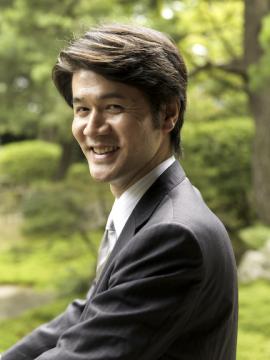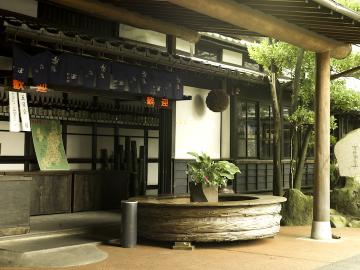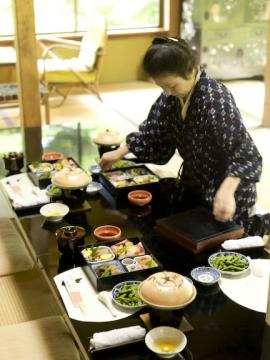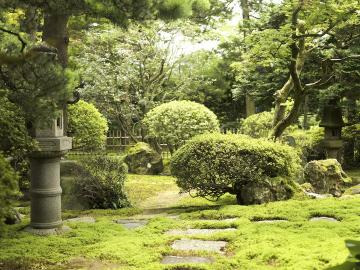Kenji Ichishima at Sake No Hana
POSTED ON 04/05/2009The highlight of last week was the sake dinner put on at Sake No Hana in conjunction with Decanter Magazine. It was their first ever sake dinner and while we were nervous about getting enough bums on seats, we ended up with nearly 70, which was just about the perfect number.
I was introducing Kenji Ichishima, the young owner of Ichisihima sake brewery in Niigata, which is on the Sea of Japan coast a couple of hours north by bullet train from Tokyo. The diners were mostly Decanter readers but there was a smattering of members of the British Sake Association, with, notably, its hard-working, knowledgeable head, Shirley Booth.
 Kenji Ichishima © Charmaine Grieger
Kenji Ichishima © Charmaine Grieger
Kenji Ichishima is remarkable in that not only is he impossibly young and good-looking to be a sake brewery owner (his father died when he was young), but he also speaks excellent English and is one of the relatively few sake producers dealing with the fact that the decline in sake consumption in Japan is an opportunity for exports. He spends quite a bit of his time travelling, especially to the US, which is the most receptive country outside Japan to sake.
He spoke briefly about his family brewery at the start, and the special features of Niigata, its rice, its soft water and its maritime climate, that help to make Niigata one of the foremost premium-producing areas of sake in Japan.
The menu was superb, and at £95 for six course, each accompanied by a different sake from Ichishima, excellent value.
 Ichishima Brewery, Niigata © Charmaine Grieger
Ichishima Brewery, Niigata © Charmaine Grieger
After a glass of a sparkling sake (the only sake not from Ichishima), we started the dinner with his Ichishima Daiginjo sake to balance the acidity of the appetisers: sesame aubergine, king crab and cucumber, sunomono, lotus root kinpira and seabass with ponzu sauce. Fragrant and delicate, it was a good beginning.
Next came the Ichishima Junmai Ginjo sake, also a premium level sake but a pure rice sake as distinct from the daiginjo which has a touch of alcohol added to enhance aroma and flavour. This chimed well with the delicate yellowtail tuna and salmon sashimi.
For the third course of miso Chilean seabass in houba leaf, grilled tuna with avocado and okra, ebi fry and yellowtail teriyaki, we drank the Ichishima Honjojo sake ‘to cleanse the palate’. Honjozo is at the first level of premium sake just down from ginjo and daiginjo and yet Kenji often prefers its robust flavours with food just as you might an approachable French appellation contrôllée red against a grand cru.
 Kenji's mum serves us lunch at Ichishima © Charmaine Grieger
Kenji's mum serves us lunch at Ichishima © Charmaine Grieger
The fourth sake, a warmed five-year-old Ichishima Ginjo Koshu, with pork ribs and sugar snaps and chicken and kanpyo maki roll, dispelled any notion that warm sake might be in some way naff. Although it’s sometimes thought that warm sake is only for tourists, in fact that Japanese also love it warm with the right dishes and as Kenji said, it went surprisingly well with the ribs.
With the penultimate dish of tuna, soft-shell crab, eel, futomaki sushi rolls, it was back to ginjo, this time the Ichishima Ginjo rather than the junmai version, and finally Ichishima Silk Deluxe sake with matcha parfait and nashi pear tart with lavender and chocolate ice cream. Amazing.
 she has green fingers too © Charmaine Grieger
she has green fingers too © Charmaine Grieger
I had imagined before we started that the portions would be so tiny and delicate that we might be hungry afterwards but there was more than enough to eat and I think that everyone by the end felt pretty full. The food had been brilliant and the service excellent. Kenji Ichishima meanwhile, talked to almost everyone in the room in his classically courteous manner, even neglecting his own dinner in the process. Hopefully, everyone there had learnt more than enough about sake and the ability of its diverse styles to go with different foods to want more.
Wine of the Week
2006 Fürst Centgrafenberg Spätburgunder Trocken.
Low yielding Pinor Noir grapes, south-facing vineyards and meticulous attention to detail are the hallmarks of this distinctive Franconian red whose pale orange tawny colour and hint of tomato leaf give way to a delicate German would-be red Burgundy of surprising weight of sweetly ripe strawberry fruit, attractively integrated oak and lively freshness on the finish. I could drink a lot of this. £19.50, Waitrose Wine Direct and 3 branches.

